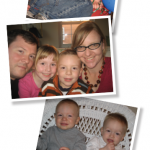
Dr. Oppermann
“This is an odd time to transition patients,” says Brian Oppermann, MD, of the Department of Rheumatology at the Geisinger Health System in State College, Pa. “These patients are not only transitioning from pediatric practices to adult practices that function differently, but they may also be moving across or out of state for college, [which] poses other new challenges.”
This means challenges in the way people are treated may arise, not the least of which is reduced parental involvement in medical decision making.
A Multi-Faceted Developmental Process
The process to come up with these toolkits was multi-faceted. The ACR Transition Work Group looked at the results of a previously published study of members of the Childhood Arthritis and Rheumatology Research Association. Practitioners were asked about what they felt was needed regarding standardized tools and what areas they felt least comfortable with during the transition process.1
To obtain input from adult practitioners, the committee used the results of a previously completed survey of members of the ACR. Both groups indicated a need for standardized transition tools in rheumatology.2
The work was overseen by a task force that was diverse geographically and in the practice setting, and included both pediatric and adult practitioners. The task force also included patients and parents. Working over a roughly nine-month period, the group reviewed existing literature and available tools, developing some tools of their own as needed.
Focused on JIA & Lupus
“It was the decision of the ACR Transition Work Group to focus on juvenile idiopathic arthritis [JIA] and lupus,” says Dr. Ardoin. “JIA is the most common pediatric diagnosis in pediatric rheumatology, and over half of JIA patients require continued treatment for arthritis in adulthood. In addition, there are some important differences in the treatment between JIA and adult arthritis about which adult practitioners should be aware.”
Lupus was chosen because it tends to be very severe, and patients will have the disease into adulthood. It is also one of the more complex diseases for which gaps in treatment can increase the likelihood of bad outcomes.
‘There is a robust amount of literature suggesting that we don’t do a particularly good job of preparing young adults with complex medical conditions to enter the adult medical sphere.’ —Stacy P. Ardoin, MD, MHS
2 Sets of Kits
The ACR toolkits were broken down into two sets for each disease: one tailored to the needs of pediatric rheumatologists and a second tailored to adult practitioners.



